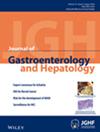Short and Endurance Squeeze Contractile Integral in High-Resolution Anorectal Manometry Is Correlated With Vaizey Incontinence Score—A Pilot Study
Abstract
Background and Aim
Fecal incontinence severely deteriorates normal social function and quality of life. We investigated the relationship between short squeeze contractile integral (SSCI), endurance squeeze contractile integral (ESCI) of high-resolution anorectal manometry (HRAM), and Vaizey incontinence score in adults.
Methods
We performed HRAM in 45 adults (26 females and 19 males), and all subjects completed the Vaizey incontinence score questionnaire after enrollment in this prospective study. The diagnosis of fecal incontinence is defined by Rome IV criteria and a Vaizey incontinence score > 5. The contraction power during short and endurance squeezes was quantified by calculating the SSCI and ESCI in the HRAM study.
Results
Patients in the incontinence group (n = 12) had significantly lower maximum pressure at short squeeze, SSCI, and ESCI (p = 0.001 and 0.004, respectively) than patients in the continence group (n = 33). The ROC curve analysis identified the SSCI < 65 000 mmHg·s·cm achieved the highest area under the curve for predicting fecal incontinence than the ESCI and the maximum pressure at short squeeze maneuver (77.30%, 74.00%, and 71.15%, respectively). The logistic regression further confirms the SSCI < 65 000 mmHg·s·cm is associated with fecal incontinence after adjusting age and sex (odds ratio = 7.30, p = 0.009).
Conclusions
The novel SSCI indicates the adequacy of contraction power during short squeeze by HRAM in adult patients and correlates with fecal incontinence. The correlation between SSCI and Vaizey incontinence score is higher than the traditional measurement of HRAM in adults with fecal incontinence.

 求助内容:
求助内容: 应助结果提醒方式:
应助结果提醒方式:


